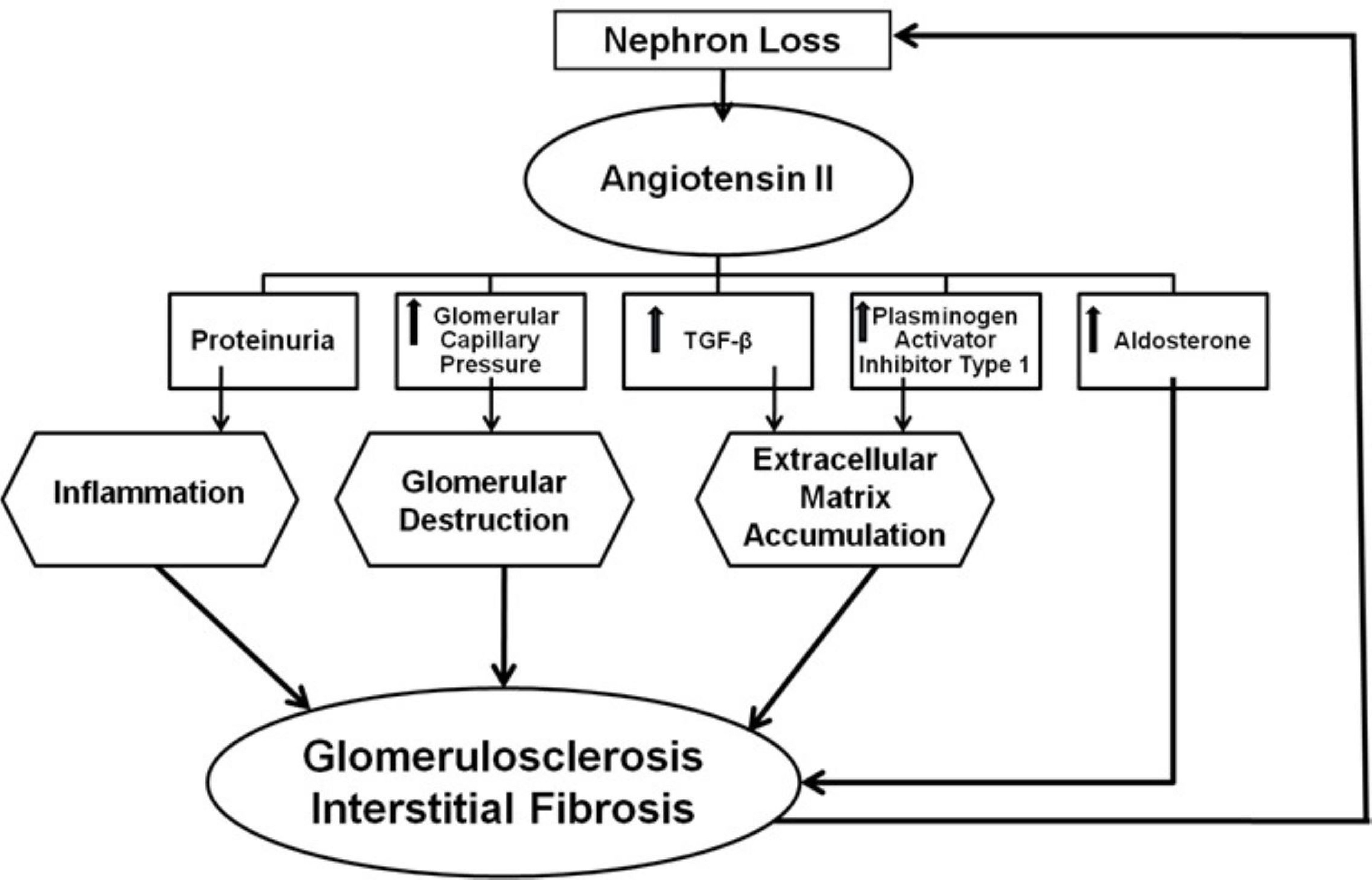Courtesy of Dr. Patricia Dowling.
Glomerular diseases include a number of types of kidney disease in which dysfunction of the glomeruli results in excessive loss of protein in the urine.
Although originally approved for the treatment of congestive heart failure in dogs, angiotensin-converting enzyme (ACE) inhibitors may be beneficial in the management of dogs and cats with chronic kidney disease (CKD). Renal disease progresses to CKD as a consequence of functional adaptations of the remaining nephrons, including glomerular hyperperfusion and hypertension controlled by angiotensin II. These responses initially enhance nephron filtration capacity and compensate for the decrease of the glomerular filtration rate; however, they are detrimental in the long term and lead to further nephron loss.
ACE inhibitors (eg, enalapril, benazepril, captopril) lower glomerular pressure by decreasing systemic blood pressure and locally inhibiting angiotensin II (see Mechanism of action of ACE inhibitors). In patients with CKD, ACE inhibitors may decrease proteinuria that is due to changes in glomerular membrane permeability and selectivity from mechanical injury induced by glomerular hypertension, potentially slowing disease progression. ACE inhibitors also tend to increase appetite and body weight in patients with renal failure.
Courtesy of Dr. Patricia Dowling.
Telmisartan is an angiotensin receptor blocker approved to decrease proteinuria associated with CKD in cats, and it has been used in dogs as well. It acts directly on the angiotensin type 1 (AT1) receptor to displace angiotensin II from its binding site, preventing receptor activation. In turn, the pressor response of the renin-angiotensin-aldosterone system (RAAS) is inhibited, resulting in a dose-dependent decrease in mean arterial pressure and subsequent decrease in proteinuria.
Because telmisartan is selective for the AT1 receptor, it does not interfere with the beneficial activation of the AT2 receptor that results in vasodilation, natriuresis, and the inhibition of inappropriate cell growth. The receptor binding is characterized by high affinity and slow dissociation, enabling once-daily administration of telmisartan.
In cats, telmisartan is rapidly absorbed after oral administration and is not affected by food intake. It is highly lipophilic, hepatically metabolized by glucuronide conjugation, and eliminated primarily in the feces. The elimination half-life is ~8 hours. Telmisartan is well tolerated in cats; mild GI signs may be observed.
Amlodipine besylate, a long-acting dihydropyridine calcium channel blocker approved for humans, is used for feline hypertension. It decreases systemic arterial blood pressure in hypertensive cats with or without CKD. Amlodipine is the drug of choice for managing hypertension in cats, and it can be administered concurrently with an ACE inhibitor or telmisartan.

